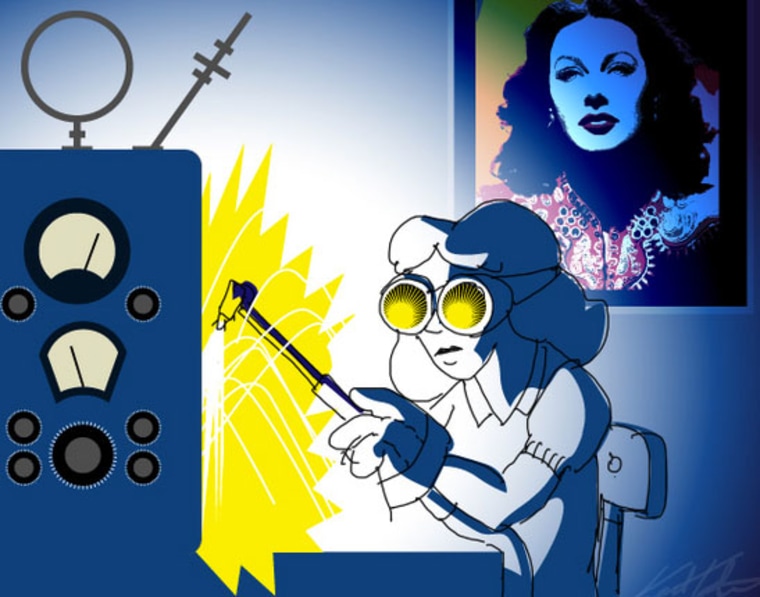Hedy Lamarr played much more than "the most beautiful woman in the world" as an Austrian-American actress during Hollywood's Golden Age. The mathematically-minded inventor first learned about military technology from dinner party conversations between her arms-manufacturer husband and Nazi German generals, before escaping to America where she eventually invented a new torpedo guidance system for the U.S. Navy.
The actress-inventor's life almost seems like a no-brainer for a Hollywood action hero makeover, given her brush with Nazis and behind-the-scenes efforts to aid the U.S. war effort during World War II. But her life is also fitting as a tragic drama — the glamour of the silver screen blinded most people to her inventor's passion that would lead to a patented "frequency hopping" breakthrough still used in civilian and military technologies today.
"The reason she set up inventor's room in her house and pursued inventing as a hobby was that she didn't drink, didn't smoke and didn't like parties," said Richard Rhodes, author of "Hedy's Folly: The Life and Breakthrough Inventions of Hedy Lamarr, the Most Beautiful Woman in the World" (Doubleday, 2011).
Any inventors willing to look beyond Lamarr's beauty would have found a kindred spirit, Rhodes said. She embodied the stereotype of the classic inventor who loved to tinker — her lesser-known inventions include an instant fizzy soda cube and a trash receptacle attached to tissue boxes.
Her most recognized work came from co-inventing a frequency-hopping wireless signal for guiding U.S. Navy torpedoes to their targets. But even after Lamarr enlisted the help of fellow inventor George Antheil and received a "Secret Communications System" patent in 1942, the U.S. Navy ignored the breakthrough until its engineers rediscovered the patent in the mid-1950s.
Lamarr's motivation for frequency-hopping likely first arose during the Viennese dinner parties held by her first husband, the Austrian arms manufacturer Fritz Mandal, in the years leading up to World War II. Guests at such parties often included German generals or admirals. [Secret Weapons of the Third Reich]
"She was perfectly positioned as Mandal's wife — as an arm piece at the fancy dinners they gave — to hear discussions about what technology the Germans were developing, how they worked and what their problems were," Rhodes told InnovationNewsDaily.
After Lamarr escaped her obsessive husband and headed for a new acting career in Hollywood, she grew furious over reports of German submarines torpedoing ships filled with refugees. She first suggested going to Washington, D.C., to testify about her knowledge of German technology before the National Inventor's Council, but nobody took her seriously.
Luckily, Lamarr met and recruited Antheil to help develop her idea for frequency hopping (also known as spread spectrum) — a concept for having wireless radio signals switch quickly among many different frequency channels so that enemies could not jam the signal. Antheil's background as a musician and tinkerer came in handy when he came up with a workable concept similar to player-piano rolls that could synchronize the switching among 88 frequencies.
The Germans had their own wire-guided system for torpedoes, but Lamarr's wireless technology never saw action during World War II. Still, the U.S. Navy eventually applied the jamming-proof technology to radios used during the Cuban Missile Crisis, and it went on to shape modern technologies such as GPS, Bluetooth in headsets and phones, and U.S. military guided missiles.
"Most of her ideas were interesting but trivial," Rhodes said. "This one was fundamental."
This is part of an InnovationNewsDaily series about the compelling aspects of various inventors' lives, personalities and inventions and the role they played in Hollywood, pop culture and the progress of society in general.You can follow InnovationNewsDaily Senior Writer Jeremy Hsu on Twitter @. Follow InnovationNewsDaily on Twitter @, or on Facebook.
